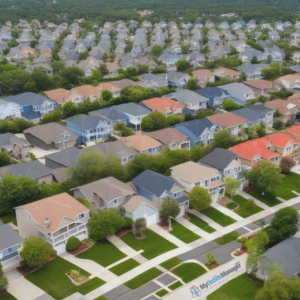As the U.S. housing market evolves, experts have weighed in with predictions for 2025, offering a clearer picture of what buyers, sellers, renters, and investors might expect. From price stabilization to policy shifts, these trends are set to shape the real estate landscape in significant ways.
1. Home Price Growth Stabilization
After years of fluctuating prices, economists predict the median asking price for homes will grow at a more modest rate of about 4% in 2025, reminiscent of pre-pandemic trends. This comes as a welcome change after the rapid price hikes during the COVID-19 era.
However, challenges remain. For instance, policies affecting the cost of building materials or labor shortages could still pressure the construction industry. If these issues persist, the supply of new homes might struggle to meet demand, leading to localized price surges in areas with limited inventory.
2. Rental Market Stabilization
The rental market is also expected to see a period of calm. With a wave of new rental units entering the market, rents nationwide should stabilize. This creates an advantageous environment for tenants, who may find it easier to negotiate leases or secure concessions such as reduced security deposits or rent-free periods.
In addition to greater housing availability, rising wages will empower renters to save more effectively or reallocate their income toward homeownership goals.
3. Mortgage Rates to Remain Predictable
One of the more reassuring predictions for 2025 concerns mortgage rates, which have shown signs of stability following the 2024 election. The average 30-year fixed-rate mortgage recently hovered around 6.78%, and economists expect rates to remain relatively steady.
This predictability is a relief for prospective buyers who have been hesitant due to uncertainty. Lower fluctuations in rates could boost market confidence, leading to increased home sales.
4. Regional Market Dynamics: Winners and Losers
While nationwide trends are useful, real estate is inherently local. Certain regions are forecasted to outperform others in 2025, with cities like Boston, Phoenix, and Grand Rapids standing out as hot markets. These areas benefit from factors such as strong job growth, higher median incomes among younger buyers, and a steady influx of new residents.
Conversely, some cities may face challenges due to dwindling affordability or slower population growth. Investors should keep a close eye on these dynamics to identify opportunities and avoid potential pitfalls.
5. Policy Changes and Their Impact
Government policies will play a pivotal role in shaping the housing market. Proposed tariffs on construction materials or stricter immigration laws could lead to higher costs for homebuilders, potentially impacting the availability and affordability of housing.
For renters and buyers alike, these shifts could translate into slower construction rates and price increases, especially in areas already grappling with tight housing supplies.
Preparing for 2025: What You Can Do
Whether you’re a first-time buyer, a seasoned investor, or someone looking to rent, staying informed about these trends is crucial. For buyers, stabilizing mortgage rates and home prices may present a window of opportunity. Renters, on the other hand, might use the steady market to their advantage when negotiating terms. Meanwhile, investors should evaluate regional markets and keep an eye on policy developments to position themselves strategically.
While 2025 promises a more balanced housing market overall, localized variations and external factors like economic policies and migration trends will continue to shape outcomes. Remaining adaptable and well-informed will be key to navigating these changes successfully.
For the original insights behind these predictions, visit the source: NBC New York.

